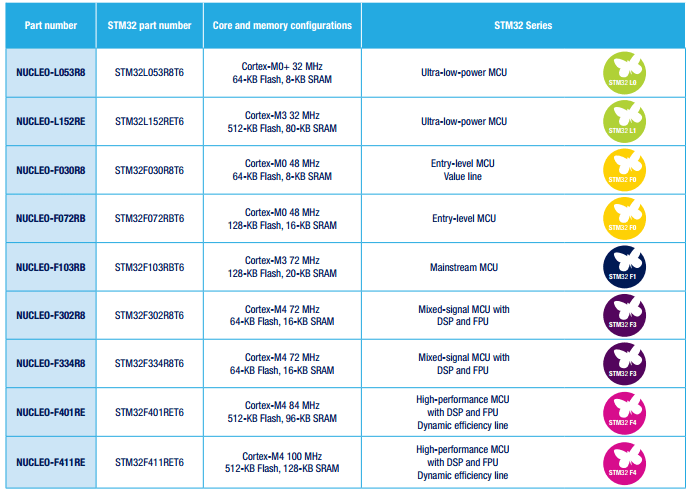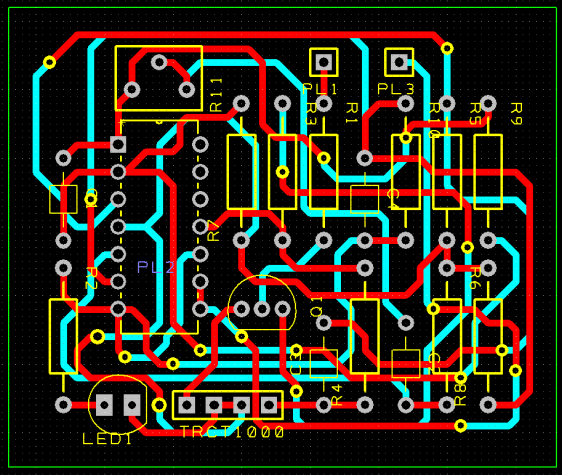Turn your body signal to sound and light via STM32 Nucleo Board
Follow articleHow do you feel about this article? Help us to provide better content for you.
Thank you! Your feedback has been received.
There was a problem submitting your feedback, please try again later.
What do you think of this article?
Introduction
Are you always curious to find out the signal generated by your own body? Do you find the body signals displayed on the graph are complicated to interpret? Do you feel the product to monitor the body signal are expensive? All the above questions can be solved by this project.
The project is based on a newly launched STM32 Nucleo Board (F030R8). The Electromyography (EMG) signal and photoplethysmogram (PPG) signal of the user is being detected and monitored. The user is being attached to the EMG and PPG signal processing circuits. Based on the strength of muscle electrical activity, different frequency signals will be output to PWM pin of STM32 Nucleo Board which is connected to a buzzer. This creates different pitches in the sound it produced. The PPG signal of the user will be monitored to determine the heart rate as well. With every beat, the LED indicator will be light up.
Components Required
You can simply prototype both EMG and PPG signal processing circuits by the components available in RS Components. Here are the lists of components used for each individual circuit.
EMG circuit
|
Components |
RS Stock No. |
QTY |
|
IN4148 Diode |
6708858 |
2 |
|
TL084 Op-amp |
0304201 |
1 |
|
Instrumentation Amplifier |
2521616 |
1 |
|
8-pin IC chip holder |
7020654 |
1 |
|
14-pin IC chip holder |
0813121 |
1 |
|
Resistor 240 Ohms |
7077616 |
1 |
|
Resistor 150 Kilo-Ohms |
7077849 |
5 |
|
Resistor 80.6 Kilo-Ohms |
4878116 |
2 |
|
Resistor 1 Kilo-Ohms |
7077666 |
1 |
|
Capacitor 1 uF Tantalum |
5381887 |
2 |
|
Capacitor 1 uF Ceramic |
6995137 |
1 |
|
Capacitor 0.01 uFCeramic |
5381180 |
1 |
|
Potential Meter 5k
|
5222407 |
1 |
PPG circuit
|
Materials Name |
RS Stock No. |
QTY |
|
Reflective Optical Sensor |
7082737 |
1 |
|
Op-amp |
0403181 |
1 |
|
14-pin IC chip holder |
0813121 |
1 |
|
BJT Transistor |
7390397 |
1 |
|
Resistor 1 Kilo-Ohms |
7077666 |
2 |
|
Resistor 150 Ohms |
7077603 |
1 |
|
Resistor 47 Kilo-Ohms |
7077805 |
2 |
|
Resistor 10 Kilo-Ohms |
7077745 |
1 |
|
Resistor 680 Kilo-Ohms |
7077892 |
2 |
|
Resistor 6.8 Kilo-Ohms |
7077735 |
2 |
|
Capacitor 1000 nF |
6844336 |
2 |
|
Capacitor 4.7 uF |
0117029 |
2 |
|
Potential Meter 5k |
5222407 |
1 |
Other Components Used:
|
Components |
RS Stock No. |
QTY |
|
STM 32 Nucleo Board F030R8 |
8029412 |
1 |
|
9V Battery Holder |
0489021 |
2 |
|
Buzzer |
6173097 |
1 |
Introduction to the STM 32 Nucleo Board
The STM32 Nucleo board provides an affordable and flexible way for users to try out new ideas and build prototypes with any STM32 microcontroller line, choosing from the various combinations of performance, power consumption and features. The Arduino connectivity support and ST Morpho headers make it easy to expand the functionality of the STM32 Nucleo open development platform with a wide choice of specialized shields. The STM32 Nucleo board does not require any separate probe as it integrates the ST-LINK/V2-1 debugger/programmer. The STM32 Nucleo board comes with the STM32 comprehensive software HAL library together with various packaged software examples, as well as direct access to Mbed online resources.
More Detailed Information on STM 32 Nucleo Board:
Hardware
EMG signal Processing Circuit:
Measuring muscle activation via electric potential, referred to as electromyography (EMG), has traditionally been used for medical research and diagnosis of neuromuscular disorders. However, using the components listed above you can easily develop your own circuit to monitor your muscle activity.
In this project, we have developed the circuit on strip board for prototyping. Similarly, we had used DesignSpark PCB to design a PCB layout for this EMG signal processing circuit.
Schematic Design
PCB Design
Setting up with the test subject
Kendall Medi-Trace 230 Foam Monitoring ECG Electrode is used. As it has a high performance; monitoring ECG electrode Conductive adhesive hydrogel High quality foam substrate resists fluids and conforms easily to skin to ensure excellent trace quality.
The test subject is holding compact and portable lever-type devices called hand gripper. This device helps to build up arm strength and muscle when you squeeze. Muscles that are situated in your forearms are the ones controlling your fingers. Your forearm flexors control the closing of your hand, while your forearm extensors control the opening. These muscles will be the primary beneficiaries of using hand grips which are the muscle group used for this experiment to send the signal to the circuit.
Strip board Prototype
PPG signal processing circuit
Photoplethysmography (PPG) is a non-invasive method of measuring the variation in blood volume in tissues using a light source and a detector. Since the change in blood volume synchronous to the heart beat, this technique can be used to calculate the heart beat as well. In this circuit, reflectance PPG (Reflective Optical Sensor-TCRT1000) is being applied.
The light source and the light detector are both placed on the same side of the body part. The light is emitted into the tissue and the reflected light is measure by the detector.
We have developed the circuit on strip board for prototyping. Similarly, we had used DesignSpark PCB to design a PCB layout for this EMG signal processing circuit.
Schematic Design
PCB design
Stripboard Prototype
Software
In this project, we have used a newly launched and high affordable development kit, STM32 Nucleo Board. We have developed the coding by using Mbed, an online complier.
More information for programming the STM32 Nucleo Board via Mbed.org:
We have used its Pulse Width Modulation (PWM) function. Unlike Arduino, having a fixed frequency for PWM output, STM32 Nucleo Board is able to output a PWM signal with different frequency and pulse width. Therefore, we have applied it to a buzzer. Based on the strength of muscle electrical activity, different frequency signals will be output to PWM pin of STM32 Nucleo Board which is connected to the buzzer. This creates different pitches in the sound it produced. The coding for the PWM function is one of the basic programs for STM 32 Nucleo Board.
Demonstration
Please watch the following video for a short demonstration of our project.
Hope You Enjoy this Project












